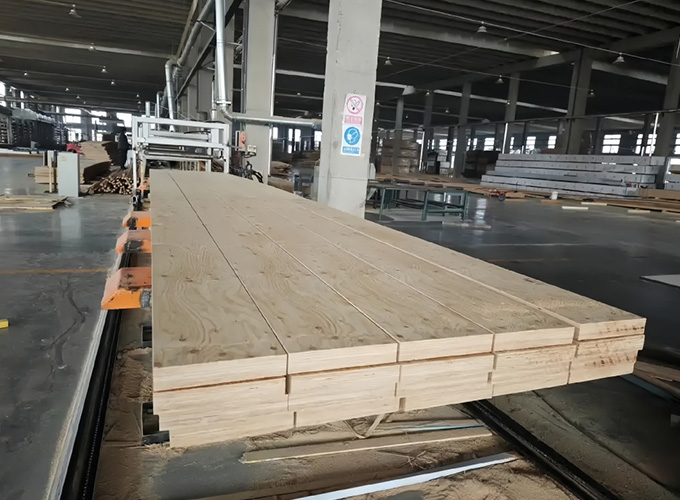Laminated Veneer Lumber (LVL) has emerged as a cornerstone material in modern construction and manufacturing industries, offering a unique combination of strength, durability, and sustainability. As an engineered wood product, LVL is manufactured by bonding thin wood veneers under heat and pressure to create large structural components. Its growing popularity stems from its ability to address the limitations of traditional lumber while aligning with the demands of contemporary design and green building practices. This article explores the key characteristics of LVL, its applications, and its advantages over conventional materials.

1. Structural Strength and Consistency
One of the most notable characteristics of LVL is its exceptional strength-to-weight ratio. Unlike natural timber, which may contain knots, splits, or grain irregularities that weaken its structural integrity, LVL is engineered to distribute stresses evenly across its layers. The manufacturing process involves arranging veneers with their grains parallel to the length of the beam, which enhances load-bearing capacity. As a result, LVL beams exhibit uniform strength in both tension and compression, making them ideal for long-span applications such as floor joists, roof rafters, and headers.
LVL’s strength is further amplified by its dimensional stability. Traditional lumber is prone to warping, twisting, or shrinking due to moisture fluctuations, but LVL’s cross-laminated structure minimizes these effects. This stability ensures consistent performance over time, even in environments with variable humidity or temperature.
2. Customizable Dimensions and Flexibility
LVL offers unparalleled design flexibility, a feature that sets it apart from solid wood. Manufacturers can produce LVL in lengths exceeding 80 feet and depths up to 24 inches, far surpassing the limitations of natural timber. This adaptability allows architects and engineers to specify precise dimensions for complex structural designs, reducing the need for splicing or jointing.
Additionally, LVL can be easily cut, drilled, or shaped on-site without compromising its structural integrity. This versatility makes it suitable for curved beams, arched doorways, or custom truss systems, enabling innovative architectural solutions.
3. Sustainability and Environmental Benefits
In an era of heightened environmental awareness, LVL stands out as a sustainable alternative to traditional building materials. It is manufactured using fast-growing, renewable wood species such as pine, poplar, or fir, which are less resource-intensive than old-growth timber. The production process optimizes wood utilization by converting up to 85% of the log into usable veneers, minimizing waste.
Moreover, LVL’s lightweight nature reduces transportation emissions compared to steel or concrete. Its ability to sequester carbon throughout its lifecycle further enhances its eco-friendly profile. Many LVL products are certified by organizations like the Forest Stewardship Council (FSC), ensuring responsible sourcing of raw materials.
4. Fire and Moisture Resistance
While no wood product is entirely immune to fire or moisture, LVL exhibits superior performance in these areas compared to solid lumber. The adhesive resins used in its production, typically phenol-formaldehyde or polyurethane, act as a barrier against moisture penetration. This makes LVL suitable for use in high-humidity environments such as basements or coastal structures.
In terms of fire resistance, LVL chars at a predictable rate when exposed to flames, forming a protective layer that slows combustion. When treated with fire-retardant coatings, LVL can meet stringent building codes for fire safety in commercial and residential projects.
5. Cost-Effectiveness and Efficiency
Although LVL may have a higher upfront cost than dimensional lumber, its long-term economic benefits are significant. Its uniformity reduces material waste during construction, while its strength allows for fewer supports and simpler installations. For example, LVL beams can span greater distances than steel I-beams, lowering labor costs and construction time.
LVL’s lightweight nature also simplifies handling and transportation, reducing logistical expenses. In prefabricated construction, LVL components can be precision-engineered off-site, ensuring faster assembly and minimizing errors.
6. Applications Across Industries
LVL’s characteristics make it a versatile material with applications spanning multiple sectors:
Construction: Primary uses include load-bearing beams, wall studs, and formwork for concrete.
Furniture: High-end furniture designers utilize LVL for its smooth finish and resistance to warping.
Transportation: LVL is increasingly used in truck trailer flooring and railway sleepers due to its durability.
Renewable Energy: Wind turbine blades and solar panel supports leverage LVL’s strength-to-weight ratio.
Challenges and Limitations
Despite its advantages, LVL is not without limitations. Its performance heavily depends on the quality of adhesives used during manufacturing; subpar bonding can lead to delamination. Additionally, LVL requires specialized tools for cutting and fastening, which may pose a learning curve for traditional carpenters.
Future Prospects
The future of LVL looks promising, driven by advancements in adhesive technology and sustainable forestry practices. Innovations such as bio-based resins and hybridization with materials like carbon fiber are expanding LVL’s capabilities. As global demand for green building materials rises, LVL is poised to play a pivotal role in shaping resilient, eco-conscious structures.

Conclusion
Laminated Veneer Lumber represents a triumph of engineering over the constraints of natural wood. Its blend of strength, adaptability, and sustainability positions it as a material of choice for modern construction challenges. By addressing the shortcomings of traditional lumber while offering new possibilities for design, LVL exemplifies how innovation can redefine the built environment. As industries continue to prioritize efficiency and environmental responsibility, LVL’s role is set to grow, solidifying its status as a cornerstone of 21st-century architecture and manufacturing.
 English
English




















